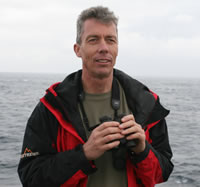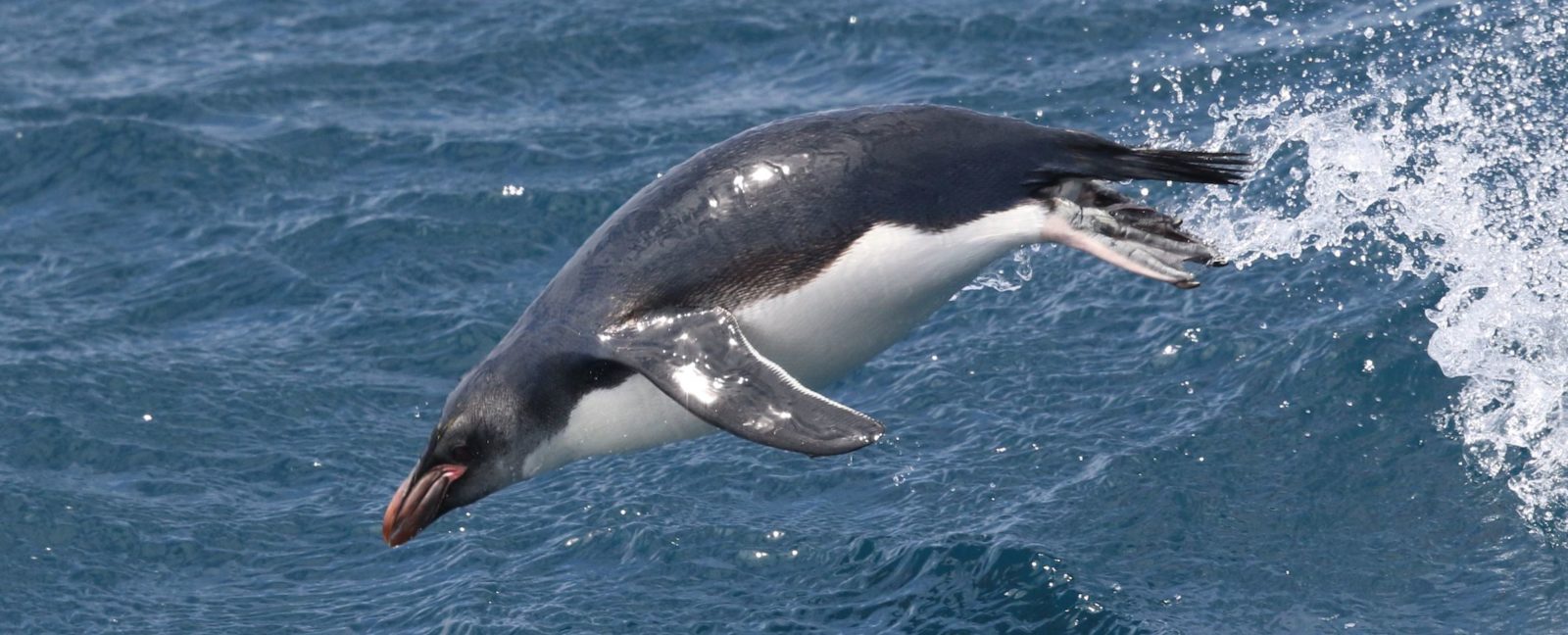 By Peter Ryan, onboard scientist, expert in general ornithology, seabird-fishery interactions, evolutionary ecology, marine debris, solid waste management, biology of oceanic islands.
By Peter Ryan, onboard scientist, expert in general ornithology, seabird-fishery interactions, evolutionary ecology, marine debris, solid waste management, biology of oceanic islands.
Leg 1, Day 18 – January 7th, 2017.
Finally a day without gale force winds! Early on, the sea lacked whitecaps for the first time in ages, but the wind picked up a bit later in the day. Only 3.5 hours of steaming transects was completed due to the large amount of time spent on station or dredging. As a result, bird numbers listed below are only a small fraction of the numbers around the ship on station (which also explains the large number of ‘incidental’ species, denoted by a ‘+’). The highlight was a frustrating Fulmar Prion, which disappeared around the bow at 8h30 never to be seen again. This large-billed sister species to Fairy Prion only breeds at Heard Island and some of the New Zealand Subantarctics. We hope to see more as we arrive off Heard tomorrow morning.
| Blue Petrel | 25 | Antarctic Prion | 23 |
| Kerguelen Petrel | 19 | Wilson’s Storm Petrel | 15 |
| Slender-billed Prion | 8 | White-chinned Petrel | 3 |
| Crested penguin spp. | 2 | Wandering Albatross | 2 |
| Black-browed Albatross | 2 | Light-mantled Albatross | 2 |
| White-headed Petrel | 2 | Southern Royal Albatross | 1 |
| Soft-plumaged Petrel | 1 | Diving Petrel spp. | 1 |
| Black-bellied Storm Petrel | 1 | Grey-backed Storm Petrel | 1 |
| Macaroni Penguin | + | Rockhopper Penguin | + |
| Northern Giant Petrel | + | Southern Giant Petrel | + |
| Cape (Pintado) Petrel | + | Salvin’s Prion | + |
| Fulmar Prion | + | Brown Skua | + |
A feature of the birds at station were the rather noisy Macaroni Penguins, which gathered in small groups to gawk (and honk) at the ship. Most were juveniles, and doubtless had never seen anything so large or orange before. No litter was seen, and all kelps were Bull Kelps Durvillaea, some of which bore goose barnacles Lepas.
